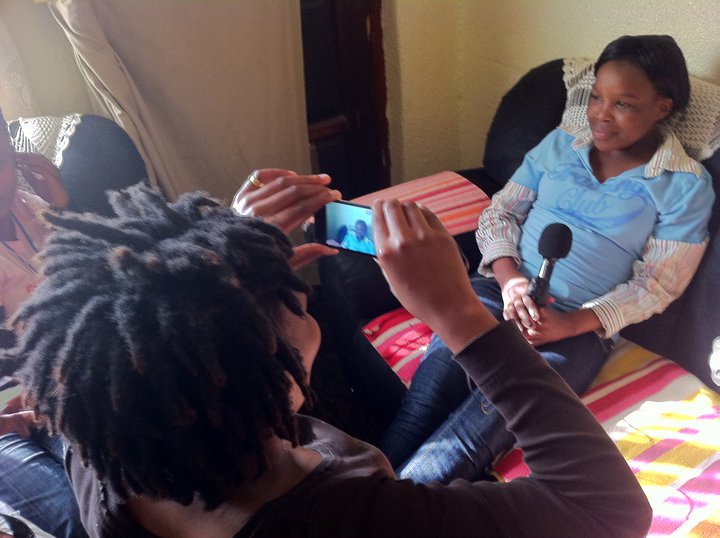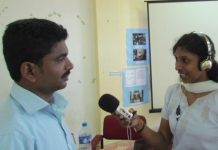
The following is a list of steps a video journalist can take to enhance the quality of filmed interviews.
They were shared with this site by journalist and media trainer, Don Ray, who sets out how a video journalist can enhance the quality of filmed interviews.
1: The right conditions
Allow lighting, composition and external noise control to be the most important factors when you select the specific interview location.
2: Get the positioning right
Don’t feel the need or obligation to place the person behind his or her desk. By removing it as a protective barrier and a symbol of power you’ll see the difference in his or her demeanour and attitude.
3: Check the background
As much as possible, avoid shooting situations where there’s a wall or other flat surface within two meters behind the person you’re interviewing. It gives the viewers less of a feeling of confinement – they want to know where the interviewee is.
4: Sitting or standing
There’s no rule that says every person you’re interviewing needs to be sitting in a chair. Ask them to lean or sit partially on a desk or other piece of furniture. It will put them in a more relaxed and casual state of mind.
5: Keep contrast in mind
Take advantage of background colors, shades and light levels to enhance the contrast of the picture. For example, someone with dark skin, hair or clothing may look better if the background is also darker. Too much contrast makes the camera very unhappy.
6: Limit movement
If you have to have the people you’re interviewing sitting in a chair, never allow them to sit in one with wheels that can swivel or that can rock. The person’s nervousness will materialise in telltale movement of the chair.
7: Prevent fiddling
Remove any items from within reach of the person – items that he or she could pick up and fiddle with during an interview. Again, it suggest to the viewer that the person is nervous.
8: Hands free
Don’t allow them to be holding anything in their hands during the interview, such as a pen, their glasses, coffee, or a cigarette (except when there is an overriding reason for it – as in a demonstration or a story about coffee, cigarettes, smoking, etc.).
9: Keep documents out of reach
If they want to have notes, books, files or documents in front of them to which they can refer for information, politely ask them to put them somewhere out of reach and assure them that if they absolutely, positively, no-way-around-it need to refer to the materials, you’ll stop the interview so they can refresh their memories. However, it’s best if you tell them to speak only about what they know.
10: Make best use of available light
If you don’t have portable light, use the main light from a window to light the subject’s face. If you have a portable light, use it to act as a backlight or hair light.
11: Rearrange background items
Don’t be afraid to open or close curtains or blinds, move furniture or remove items from the walls or from flat surfaces to enhance the composition and lighting of the picture.
12: Avoid reflections
If the person is comfortable doing the interview without wearing glasses, consider doing that. It will prevent reflection and glare problems during the interview. No matter how well you plan the picture, the subject of the interview will always shift positions so that the light reflects off the glasses and into the camera lens.
13: Limit distractions
Listen for and try to prevent unwanted noise making its way into the interview. Ask the interviewee to turn off mobile phones, unplug or turn off regular phones, turn off any clocks, fountains, radios, aquarium filter pumps, air conditioners, heaters, or refrigerators. Be aware of pets, birds, activities in adjoining rooms or activities that might take place outside the windows. If there are workers outside with lawn mowers, power tools or other tools that make noise, ask them to take a break during the interview. If children are playing outside, find a way to encourage them to play somewhere else.
14: Place warnings
If you can, put a note on any doors that lead to your interview location. “Shhh. We’re taping an interview. Can you come back later? Thanks!”
15: More than three is a crowd
The optimum number of people for an interview is two: the person you’re interviewing and you. Do not allow anyone else to be in the room or near the outdoor interview. If any other people must be there, don’t allow them to be in a position where they can make eye contact with your interviewee. You want the viewer to understand that the person on camera is speaking to just one person. If the person you’re interviewing sees other eyes, he or she will politely talk to them also, as if they’re in an auditorium. That’s confusing to the viewer.
16: Create a natural environment
Avoid coaching the person before the interview. The only thing you need to say is that they should not look at the camera – they should be talking to you. Any other coaching or directing will almost always put them in the role of ‘actor’ or ‘performer’ and they’ll feel – and display – even more fear and anxiety. Hone your interviewing skills so that you can elicit complete sentences and complete thoughts.
17: Basic housekeeping
When you have finished your interview, put everything back the way it was and leave the location clean and tidy. Close or open curtains or blinds to return them to their original positions, wipe down any surfaces you might have soiled, pick up any tape wrappers or other debris and return the location to exactly as it was before you invaded with your intrusive equipment.
18: Say thanks
No matter how unhappy you were with the interview – even if you’ve done two or three takes in which your interviewee repeatedly performs poorly – tell the person that he or she did a great job and thank them from your heart. You are thanking them for their time and trouble, not for their performance.








